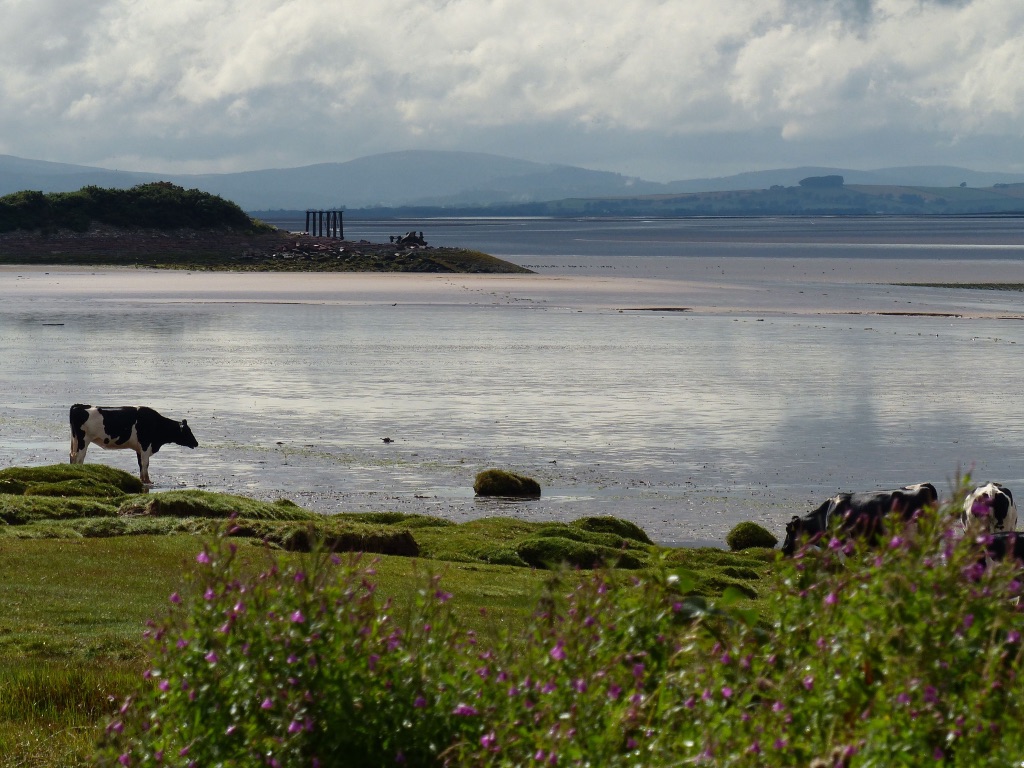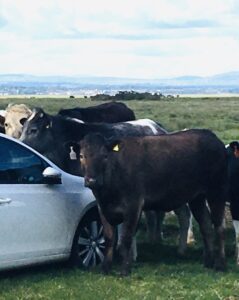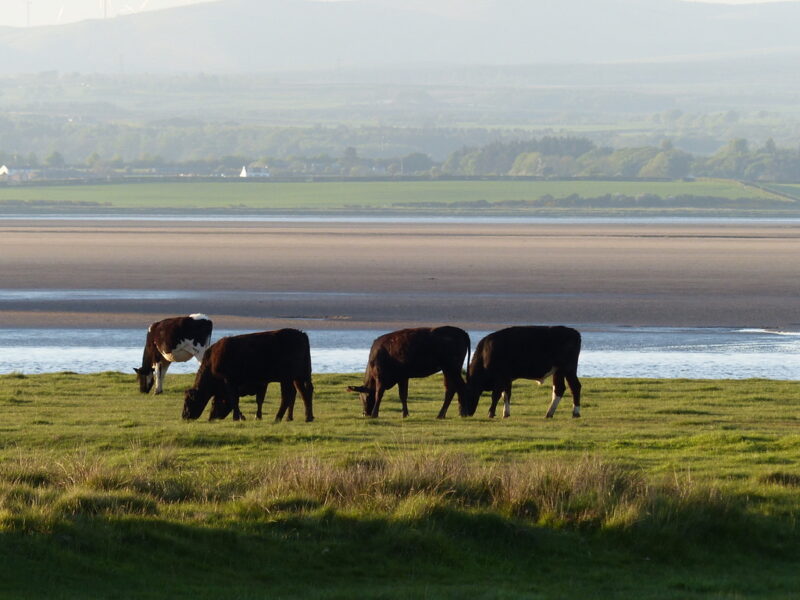
Immersed in the difficulties of the last year it has sometimes been easy to forget that the natural world and Solway rural life, in spite of the pandemic, have retained their seasonal patterns. The lunar cycle continues and the moon has waxed and waned resulting in the daily rise and fall of the Solway estuary tides. Temperatures have grown cold and then ever so slightly warmer. Crops have been planted, harvested and planted again. The Solway farmers moved their animals inside for the winter months. Now the annual cycle of the farmers year sees lambs and calves in the fields and cattle back out grazing on the Cumbrian salt marshes. Another Solway spring has emerged from the cold, dark winter months.
I love that the grazing of cattle and sheep on the Cumbrian Solway salt marshes in England is part of an ancient tradition that has endured for centuries, wherein each year farmers have to bid at an auction for a number of ‘stints’. The purchase of one stint allows a farmer summer salt marsh grazing for 1 beast (cattle) or 2.5 sheep. This means that the cattle and sheep you see on some Solway salt marshes in the summer months, are owned by a mix of farmers.
In May the cattle go out to graze on the wide-open salt marsh grasslands next to the Solway estuary waters and sands. Initially they seem to be slightly nervous and stay closer together. As time passes and late spring turns into summer, the cattle start to appear a little more relaxed and they disperse across the marshes, sometimes wandering on to the Solway estuary sands at low tide. Very occasionally small groups of bullocks have been known to visit the Scottish Solway coast by walking at low tide over this unpredictable and treacherous part of the border between England and Scotland. An activity that tends to result in a convoy of local Cumbrian farmers driving cattle trailers around to the Dumfries and Galloway coast in Scotland to collect their beasts and bring them back to the English side of the Solway. I have also been told stories of the local emergency services having to help extract cattle that have become mired in the Solway estuary sinking sands.
A lack of road awareness is a consistent theme amongst the cattle and sheep that graze the salt marshes. In their world cars, trucks and motorbikes are clearly not seen as the danger that they are. Unfortunately this has resulted in a number of accidents (usually fatal for the animals) due to vehicles travelling too fast along the causeway roads that cross various Solway salt marshes. For some unexplained reason the cattle seem to particularly like congregating in groups on the road in the evenings as the sun sets. Sheep and bullocks can however saunter across the salt marsh roads at any time of day.
Another recurring theme amongst these young beasts is their liking for parked cars. Windscreen wipers seem to hold a particular fascination.
On a number of occasions I have seen walkers who, on returning to their vehicle parked on the edge of the salt marsh, are confronted by a semi-circle of bullocks fanning out from their car.

Having enjoyed long winter walks on the local salt marshes, the return of the cattle to the Solway coastal grazing heralds a change for me in how I approach my walking in these areas. Part of the reason for this is because the salt marsh cattle can sometimes be over-curious about walkers. People walking dogs on the marsh can be of particular interest and I have seen dog walkers being studiously and very closely followed by groups of attentive bullocks. For these reasons, if out walking on the salt marshes in the summer months, I tend to pick areas for my walks that are cattle and sheep free. Avoiding getting close to grazing animals and thereby avoiding any problems.
The Solway salt marshes have an incredibly rich heritage which includes different historic military campaigns, horse and hound racing, various forms of transport and local food production. I occasionally lead guided heritage walks out onto Burgh salt marsh near Burgh by Sands. Factoring in the avoidance of Solway high tides and the seasonal grazing of the cattle, these guided walks tend to take place in early spring or late autumn - before and after the cattle grazing season. If you are interested in finding out more about the grazing of livestock on Burgh salt marsh, perhaps grab a cuppa, find a comfy chair and have a listen to this BBC radio programme.

